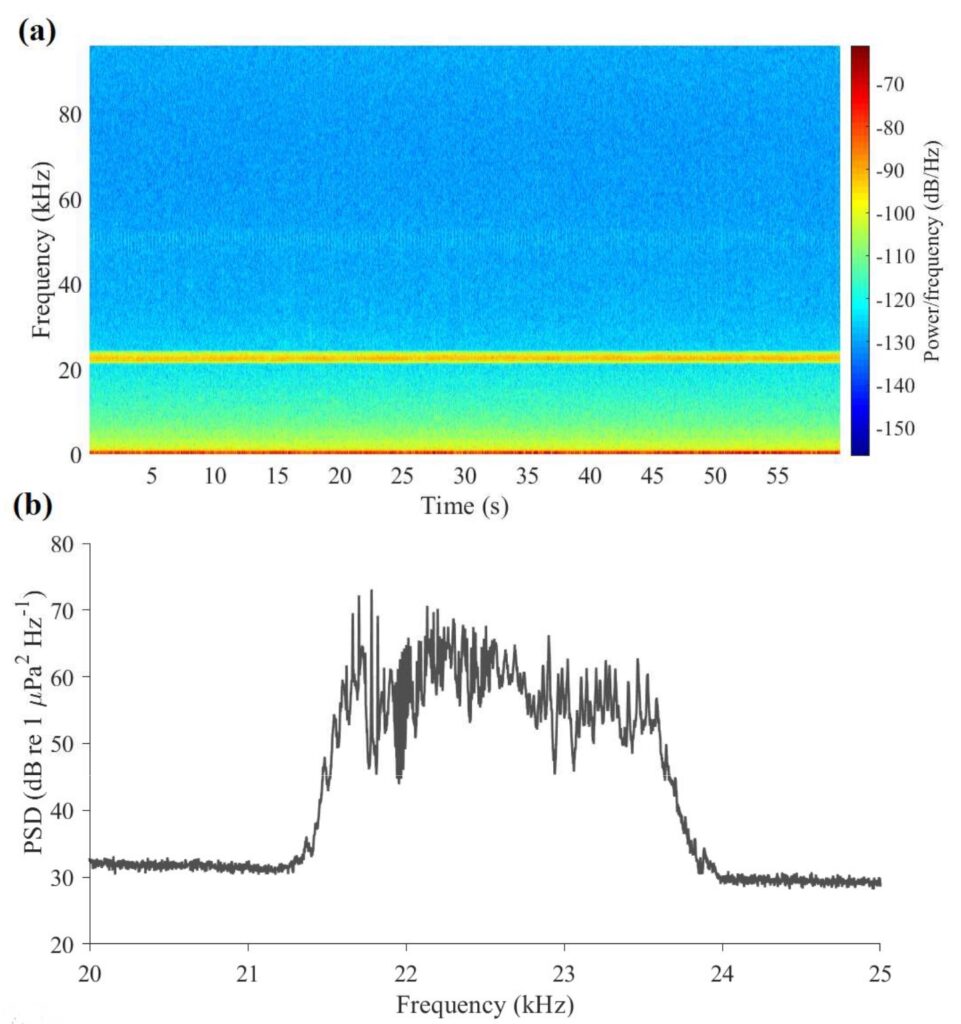A Big new source of noise in the sea…

The blossoming of marine technology – from data management to robotics, is really driving the industrialization of the ocean – to the extent that it really needs to be tracked. This is one of the remits of OCR – flashing red lights in folk’s dashboards on incoming technology. One of those new technologies that raised my eyebrow a couple of years back was an ultrasonic anti-fouling system.
When you put any surface in seawater it becomes habitat. When I was a pup, our family would drop a small boat in San Diego’s Mission Bay for a two-week fishing vacation. In just that short time, barnacles – along with all manner of algae, took root on the hull. This bio-coating adds friction to a boat’s hull, so vessels that are in the water for stretches longer than two weeks need to figure out how to prevent this fouling from occurring.
This has traditionally been handled by applying toxic coatings on the hull – sheet copper, paint with copper sulfate, or other bio-toxins in it. Of course the problem here is introduction of toxins into the marine environment – at an industrial scale. This poses a problem for marine life, particularly in harbors, ports, and other constrained areas where ships aggregate. After decades of evidence on the impacts of bio-toxins, regulators and port authorities are closing in on the environmental impacts of these toxins.
In seeking alternatives to this bio-toxic/bio-fouling problem, a number of companies started manufacturing ultrasonic anti-fouling systems – at an industrial scale.
While I did notice their introduction a few years back, I wasn’t really tracking it. So one of the more alarming presentations at the Aquatic Noise 2022 conference was given by Bruce Martin, from JASCO Applied Science on this infrasonic anti-fouling technology. They sort-of “discovered” the extent of this problem while monitoring the soundscape of the waters in and around Vancouver, and noticed an unusual amount of noise in the 20kHz-30kHz range.
It turns out that this problem is really pervasive. Some of the companies involved are MacKenzie Marine, SoniHull, and Ultrasonic Antifouling. If you look at their websites you find the they are not kidding around. When Bruce inquired into one of these companies, he found that they had not really done their biology work, and maybe assumed that if they couldn’t hear it, it wasn’t a problem, or on a per-incident level, “it wasn’t that loud,” or something.
Unfortunately the development of some these systems have “swum under the regulatory sonar” as they developed, and now we have a huge beast in the ocean that will need our attention.
Each one of these companies sincerely advances the idea that they are “environmentally friendly.” And true to form, as physical oceanographers, they are correct within their own metrics. SoniHull looks at the “non-inertial cavitation” as the operating mechanism behind the technology – how vibrating a hull at high frequency creates bubbles that prevent organisms from taking root. This may be so, but marine organisms are not just input devices that avoid unfavorable habitat, they also hear stuff.
And as it happens, the frequency band that the anti-fouling systems occupy completely overlaps the acoustical niches of odontocetes. In Vancouver this would be the the acoustical niches of the critically endangered Southern Resident Killer Whales – as well as the harbor porpoises, Risso’s dolphins, and sperm whales all found in and around Vancouver’s Salish Sea. Not to mention herring, shad, and other clupiforme fishes – and who knows which invertebrates.
And of course this technology is not just found in the Salish Sea. By the evidence presented by the various ultrasonic anti-fouling systems companies, it has made its way around the globe. And from what it seems, without much biological oversight.
The question is how to mitigate these impacts? Without digging too deeply into it, I’d suggest defeating the systems when the vessels are underway. Then perhaps some material cloaking system to attenuate sound propagation while the vessels are in port.
Let this be a BIG FLASHING RED LIGHT in our dashboard!

